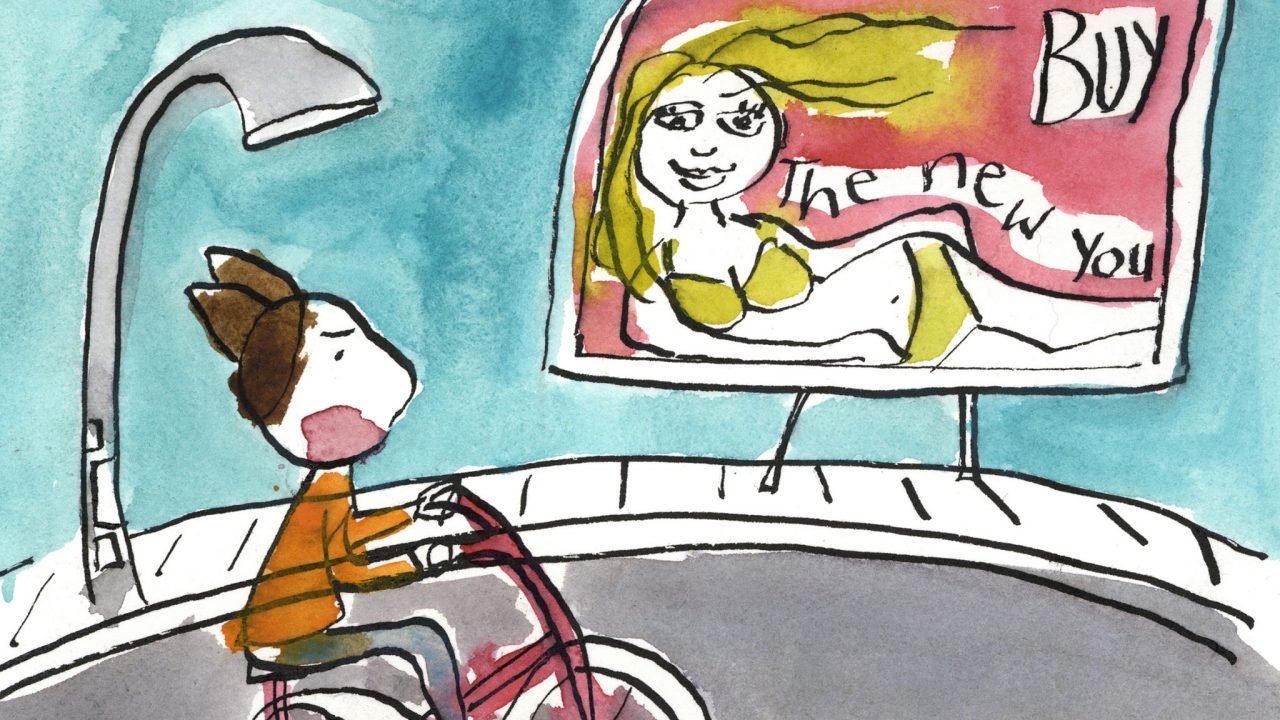
Mini-Lesson for Flawed
Mini-Lesson for Flawed
Mini-Lesson for Flawed
Theme: Self-esteem and healthy self-image
Ages: 12-14
Flawed, Andrea Dorfman, provided by the National Film Board of Canada
Keywords/Topics: Body image, self-image, self-esteem, flaws, self-reflection, confidence, identity, character, media.
Guiding Question: What does it mean to have a healthy self-image, and why is it important? How can we develop our self-esteem?
Summary: In this animated documentary, director Andrea Dorfman meets a man who happens to be a plastic surgeon. At first, she’s put off by him; she doesn’t want to date him because she feels uncomfortable about the fact that he alters people’s appearances for a living. After getting to know him better, the protagonist has to look inward to face struggles with her own insecurities about her physical appearance.
Activity 1) Open Discussion
Watch this clip from the film and then, in small groups, discuss the questions listed below; make notes about what was discussed. Come back together in a larger group setting and share your answers. As a class, brainstorm some healthy strategies to help increase self-confidence. Write the answers on the board.
Guiding questions:
- What does the word “self-esteem” mean?
- What does it mean to have a healthy self-image?
- Why is it important to have a healthy self-image?
- Does the protagonist in the film have a healthy self-image? Why or why not?
- Some people have a tendency to compare themselves to others; how can this negatively affect one’s self-esteem?
- Think about people you know who have high self-esteem. What qualities make their confidence apparent? How do you think that individual developed their positive self-image?
- What are some strategies that someone can use to gain self-confidence and feel better about themselves?
Go Deeper:
In the film, the protagonist faces her fear of telling her partner about her physical insecurities. Why might it be necessary to face our fears? Can you think of a time when you had to face a personal fear? What was the result? Are you still fearful of this? Write a short story about a time when you or someone you know had to face a fear.
Activity 2) Reflective Writing/Journaling
In this video clip, Dorfman discusses comparing herself to Gracie Sullivan, who is illustrated as the perfect teenager. Responding to the reflection questions listed below, write a one-page personal reflection.
- Do you believe that perfection exists? Why or why not?
- Why might it be good to be different from others? Give an example.
- What do you think about “flaws”? Can they be a positive?
- Dorfman states that perhaps her large nose gave her “character.” What do you think she means by this?
- “Why would you want to be ordinary when you can be extraordinary?” What do you think Dorfman means when she states this?
Go Deeper
The media have an impact on how we feel about many things. Have students take some time to research the term media to ensure they have a solid understanding of it. How do the media affect how we think about our personal appearance? Teachers, provide multiple appropriate media sources for students. Students then pair up, explore the media sources and pick out five different ads that may negatively impact self-image. Students share their findings in small groups and then discuss together as a class.
Activity 3) Postcard to Myself
In the film, the protagonist and her new friend decide to exchange illustrated postcards to get to know each other better over the distance that separates them. Watch the following clip. Create two or three illustrated postcards addressed to yourself. Each note should have a positive message to you on the back and a corresponding image on the front. The message will be a description in four to five sentences of something you love about yourself and/or are proud of. These cards can be kept handy to refer to if you’re feeling low about yourself.
Go Deeper
Consider the type of art that the director uses to animate the film. What do you notice about it? How might her style of illustration correlate to the theme of the film? Art is a very personal form of expression. How might one’s inherent imperfections be positive? Research examples of people who have used imperfections to their advantage. Share and discuss.
Shannon Roy has 12 years of teaching experience at a variety of levels, from elementary school up to adult education classes. Working primarily as a high school art and photography teacher for the Calgary Board of Education, she developed, maintained and implemented art programs for a variety of students. Additionally, as a professional photographer and painter, Shannon has a keen interest in and dedication to the arts, and to advocating for strong arts programs in schools. She has currently relocated from Calgary to Montreal to obtain her master’s degree in Art Education at Concordia University.
Pour lire cet article en français, cliquez ici.
Discover more Mini-Lessons | Watch educational films on NFB Education | Watch educational playlists on NFB Education | Follow NFB Education on Facebook | Follow NFB Education on Pinterest | Subscribe to the NFB Education Newsletter



